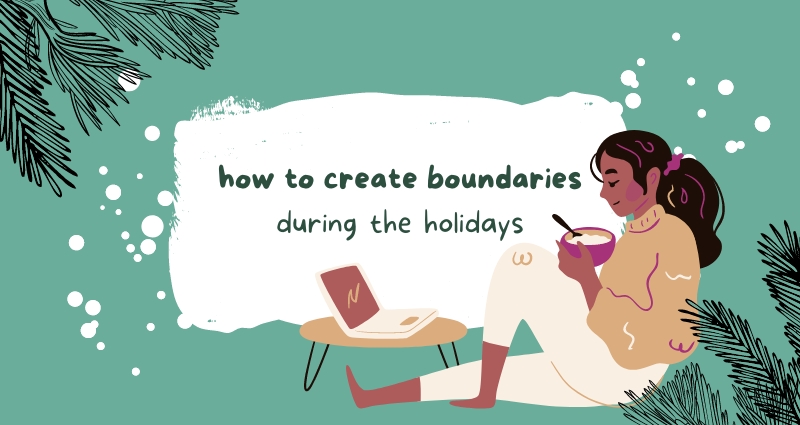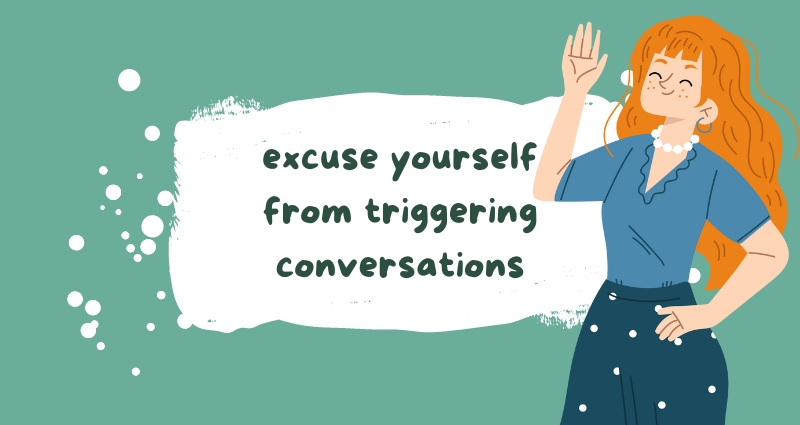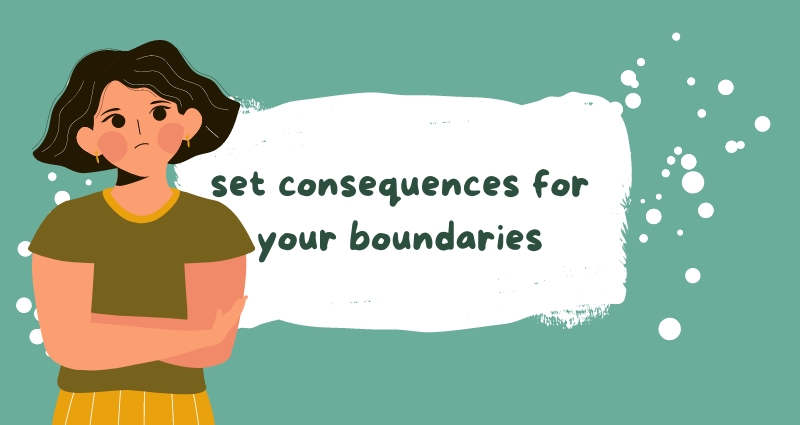How to create boundaries during the holidays for better mental health

Boundaries—in other words: limits, rules, or expectations we set for our well-being—protect both us and others from being hurt. While creating boundaries can be hard and uncomfortable in the short term, they set up more positive relationships in the long run.
The holiday season, for both good and bad, often tests our boundaries with the end of the school semester, family visits, gift-giving, and extra social obligations. Here’s how to use boundaries to protect your mental health from holiday stress:
“Boundaries are limits, rules, or expectations that we set to protect both us and others from getting hurt.”

Define your boundaries ahead of time
Define your boundaries now so that you know your limits ahead of time—after all, it’s easier to enforce boundaries if you have a clear idea of what they are. Be clear about these boundaries to others.
Consider:
- What do I want to do for the holidays?
- How do I want to feel after the holidays?
- Do I need some time for myself? When and how often do I need time for myself?
- What helps me recharge after a stressful event or conversation?
- Am I saying yes because I want to or because I feel like I have to?

Set expectations for celebrations and gift-giving
Discuss expectations early—talk about what both you and others want and don’t want to do for the holidays. Collaborate with friends and family on how you’ll celebrate the holidays in a way that satisfies everyone’s needs.
When discussing holiday plans:
- Establish who you are and aren’t exchanging gifts with.
- Set a budget cap for gifts.
- Set a max amount of time you’ll spend at a party before leaving. If you’re going with another person, agree on a time you intend to leave by.

Excuse yourself from triggering conversations
It can be hard to talk with someone who has extremely opposing opinions from you—and you are allowed to step away from talk that upsets you! Your emotional safety matters.
Some ways to disengage from a charged conversation:
- Agree to disagree.
- Ask to change topic (or just change the topic yourself).
- Explicitly state the topic is upsetting and you will not talk about it right now.
- Physically walk away.

Set consequences for your boundaries
Boundaries without a consequence are just a suggestion. Spell out what will happen if a boundary is broken. Follow through with what you say you’ll do.
If a boundary is crossed:
- Restate your boundary again.
- Tell them what you will do in response to a broken boundary.
- Follow through on that consequence.
- Limit engagement if they continue to disrespect your boundary.

Be forgiving with yourself
Boundaries are a continuous effort, and it’s normal to make mistakes sometimes. Don’t beat yourself up over it. Instead, learn from this experience and move on.
Remember: you’re not alone. Whether you’re a teen or an adult concerned about a teen, you can call or text Teen Lifeline’s hotline for help any day of the year at 602-248-8336.
Or, anyone in the US struggling with a mental health crisis can call the National Suicide Prevention Lifeline at 988 or chat online at 988lifeline.org/chat.
We’re wishing you truly happy holidays!
